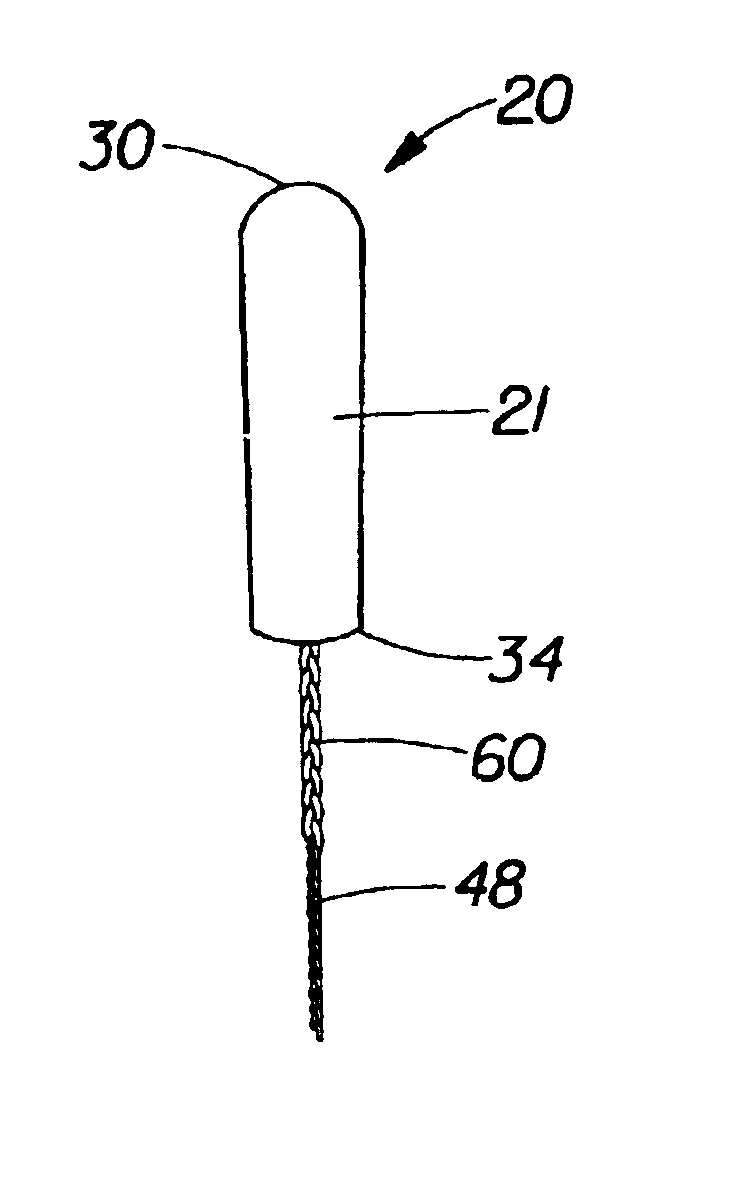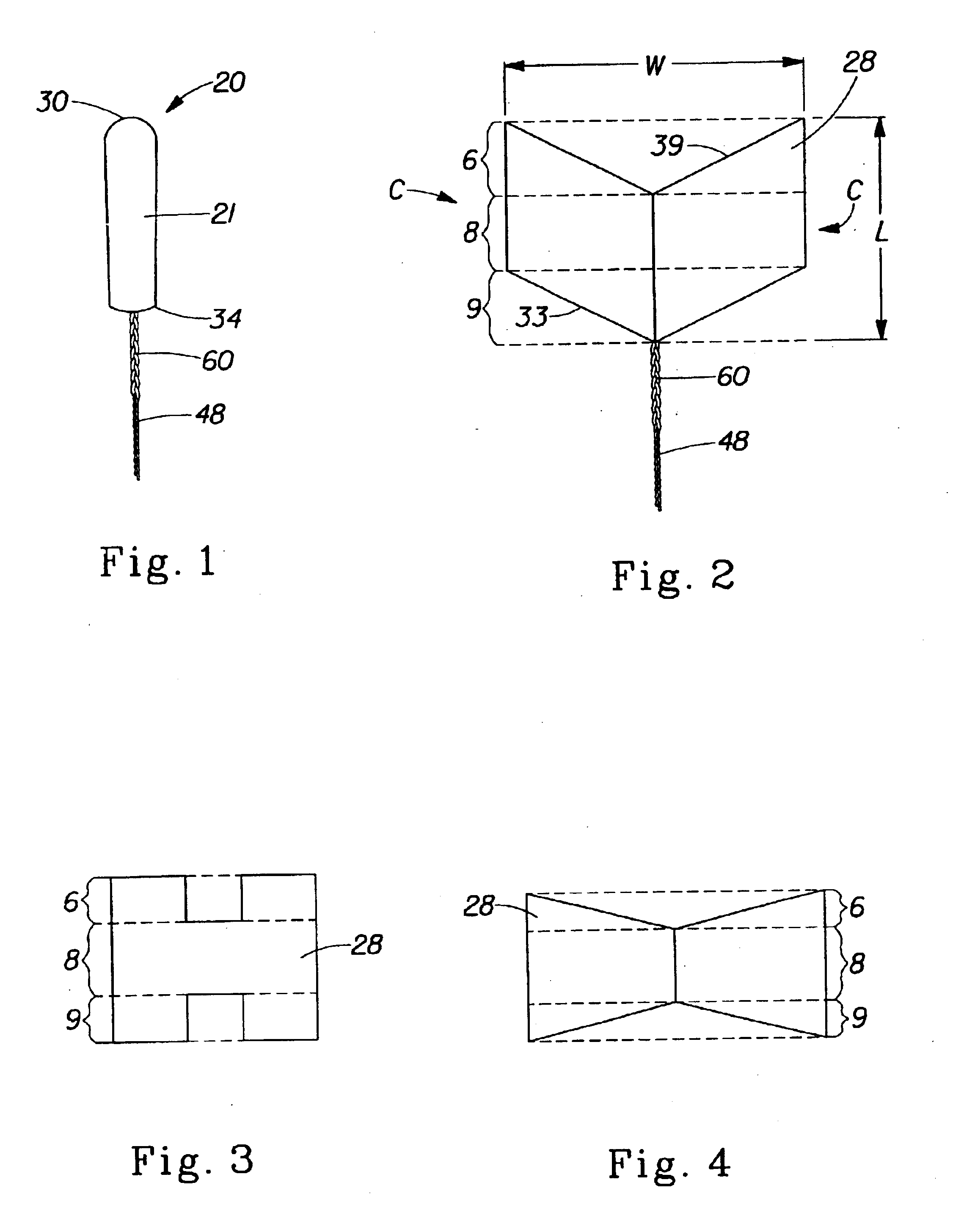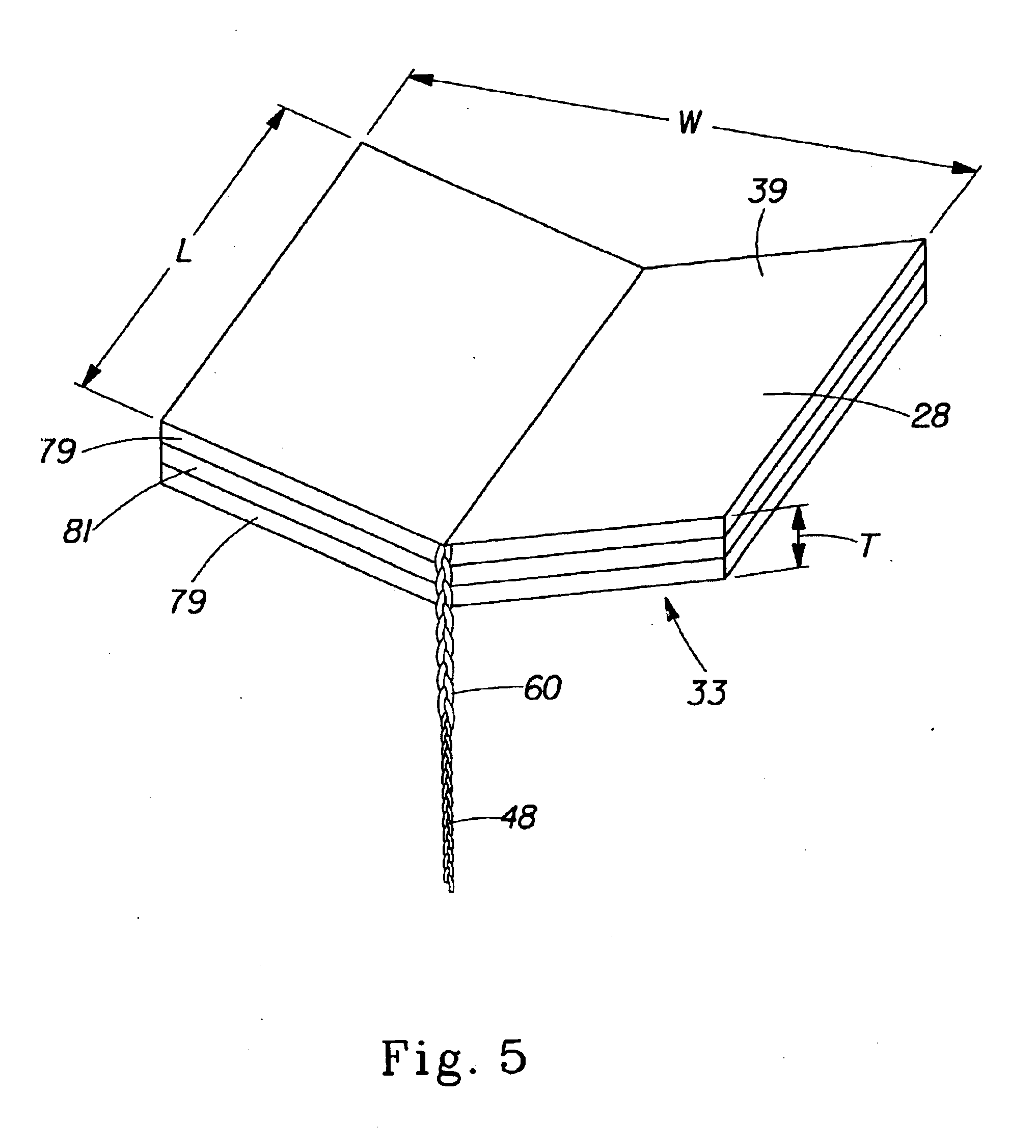Protection tampon and method of making
a protection tampon and tampon technology, applied in the field of absorbent tampons, can solve the problems of insufficient or fast expansion of the best of them, failure of bypass, and inability to provide good protection against leakage,
- Summary
- Abstract
- Description
- Claims
- Application Information
AI Technical Summary
Benefits of technology
Problems solved by technology
Method used
Image
Examples
Embodiment Construction
The present invention is directed to an absorbent tampon having improved leakage protection though independent protection mechanisms. FIG. 1 shows one embodiment of such an absorbent tampon, tampon 20. The present invention, however, is not limited to a structure having the particular configuration shown in the drawings.
As used herein the term “tampon” refers to any type of absorbent structure which is inserted into the vaginal canal or other body cavities for the absorption of fluid therefrom. Typically, tampons are constructed from an absorbent material which has been compressed in any or all of the width direction, the radial direction, and the axial direction, in order to provide a tampon which is of a size and stability to allow insertion within the vagina or other body cavity. A tampon which has been so compressed is referred to herein as a “self-sustaining” form. That is, the degree of compression applied to the absorbent material of the tampon pledget is sufficient so that i...
PUM
 Login to View More
Login to View More Abstract
Description
Claims
Application Information
 Login to View More
Login to View More - R&D
- Intellectual Property
- Life Sciences
- Materials
- Tech Scout
- Unparalleled Data Quality
- Higher Quality Content
- 60% Fewer Hallucinations
Browse by: Latest US Patents, China's latest patents, Technical Efficacy Thesaurus, Application Domain, Technology Topic, Popular Technical Reports.
© 2025 PatSnap. All rights reserved.Legal|Privacy policy|Modern Slavery Act Transparency Statement|Sitemap|About US| Contact US: help@patsnap.com



